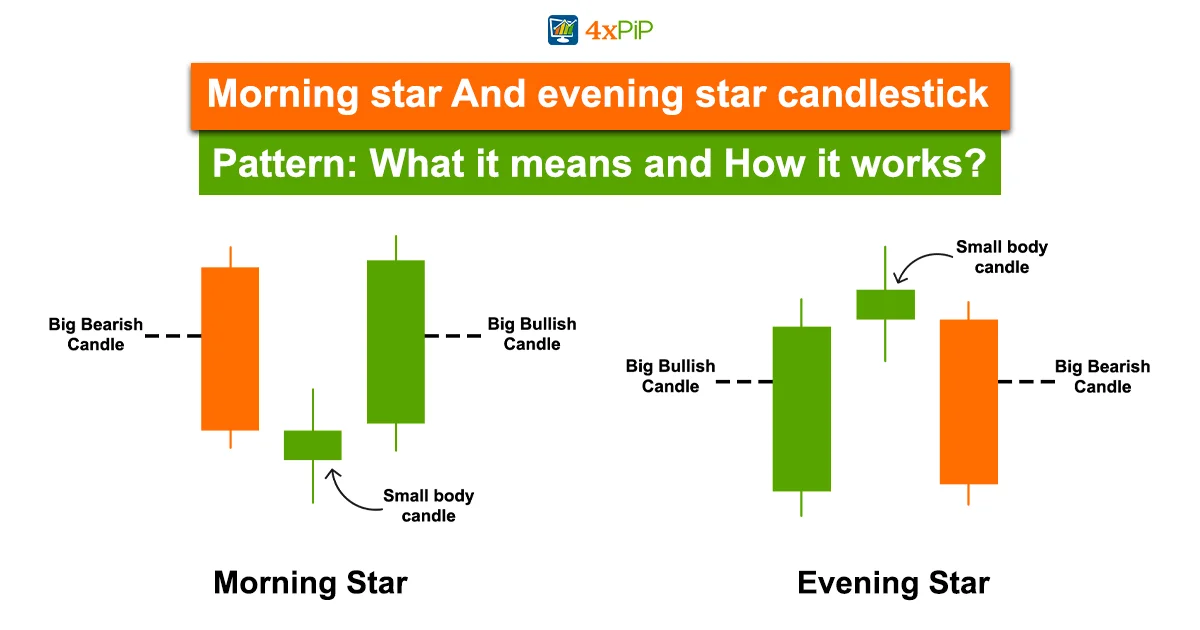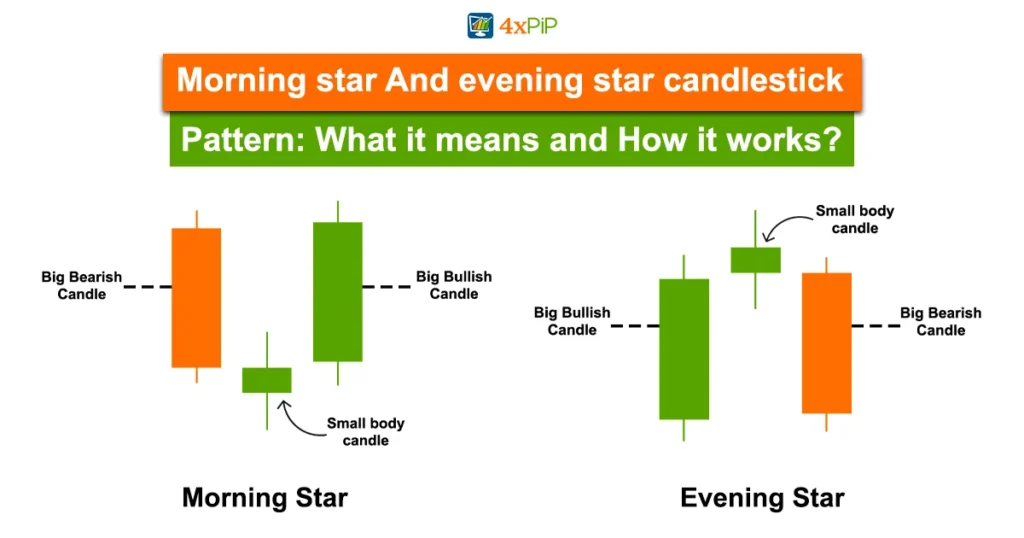In the trading world, finding reliable patterns can be like finding a needle in a haystack. But fear not, because we have uncovered two powerful candlestick patterns bearing hope: the Morning Star and Evening Star candlestick patterns. These candlestick patterns command attention due to their surprising ability to forecast potential market reversals. By learning to identify and interpret these patterns with 4xPip, traders gain an invaluable edge in their decision-making. So join us as we delve into the fascinating world of candlestick patterns and discover how the Morning Star and Evening Star can light up your trading journey.
What is The Star Candlestick Pattern in Trading?
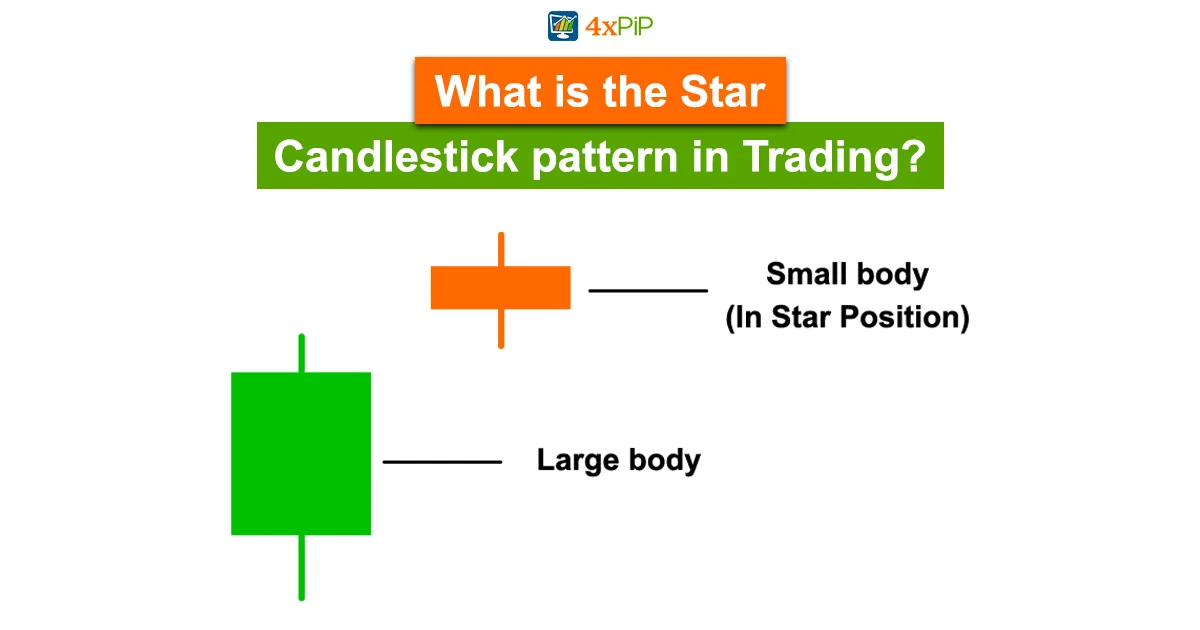
Candlestick patterns have been used for centuries by Japanese rice traders, but they have gained widespread popularity among modern traders due to their effectiveness in analyzing market trends. The Star Candlestick Pattern is one such pattern that traders often rely on to identify potential trend reversals.
The Star Candlestick Pattern consists of three candles that form a specific pattern on a price chart. The first candle is bullish or bearish, indicating a strong price movement. This candle sets the stage for the potential reversal. The second candle is a small candle that appears as a star, with a small body and long wicks. This candle represents indecision in the market and acts as a warning signal for a possible trend reversal. The third candle is a confirmation candle that validates the reversal. It usually has a body opposite in color to the first candle and closes beyond the midpoint of the first candle’s body.
There are several variations of the Star Candlestick Pattern, each with its implications. Some of the common types include morning star and evening star candlestick patterns.
What is The Morning Star in The Candlestick Pattern?
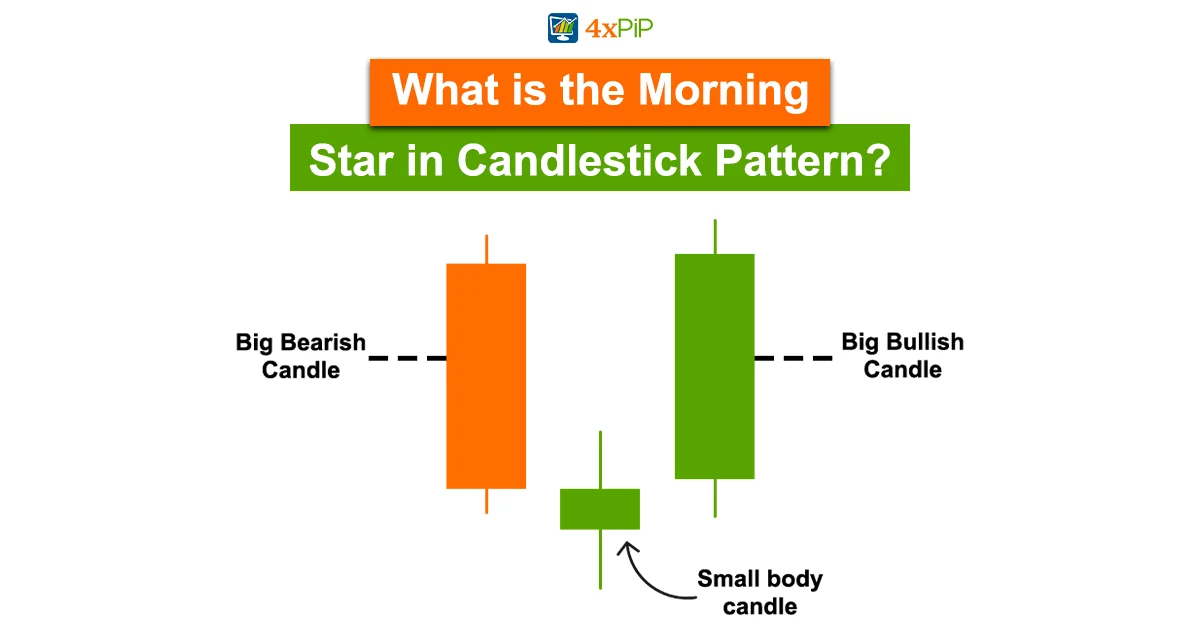
The Morning Star is a bullish reversal pattern that signals the end of a downtrend. It typically unfolds over three days and consists of three candles.
- The first candle is a long, bearish candle, indicating a strong downtrend.
- The second candle is small-bodied, also known as a doji or a spinning top, representing market indecision.
- The third candle is a long bullish candle that closes halfway up the first candle’s body.
This pattern suggests that the bears are losing control, and a bullish reversal may be imminent. Identifying the Morning Star pattern requires careful observation of the candlestick chart. The first step is to look for a strong downtrend characterized by a series of bearish candles. Once the downtrend is established, the next candle will be small-bodied, indicating market indecision. Finally, the third candle will be a bullish candle that closes at least halfway up the body of the first candle.
It’s important to note that the Morning Star pattern is considered more reliable when the second candle is a doji or a spinning top, as it indicates a higher level of uncertainty in the market. Additionally, the longer the bullish candle in the pattern, the stronger the potential reversal signal.
How to Trade the Morning Star Candlestick Pattern?
Trading the Morning Star candlestick pattern involves a systematic approach to harness potential bullish reversals from bearish to bullish. However, the significance of this pattern is amplified when supported by other technical indicators, such as the relative strength indicator (RSI). Another crucial element to consider is the volume associated with forming the pattern.
Consider the overall market trend, with the Morning Star being most potent in a pronounced downtrend. For added confidence, wait for confirmation through subsequent bullish candles. Establish entry and exit points by entering a long position at the candle’s opening following the Morning Star, setting a stop-loss below its low, and determining a profit target based on technical analysis. A trader typically adopts a bullish position in the respective stock or asset when implementing a Morning Star strategy. The objective is to ride the emerging uptrend until there are discernible indications of another reversal in the market conditions. This strategy combines the visual cues of the Morning Star with the supporting factors of increasing volume, offering a comprehensive approach to identifying and capitalizing on potential bullish trends.
You can download your Morning Star and Evening Star candlestick pattern finder indicator from 4xPip. Also, 4xPip has a talented team of MQL4 programmers specializing in custom indicator programming.
What is The Evening Star in a Candlestick Pattern?
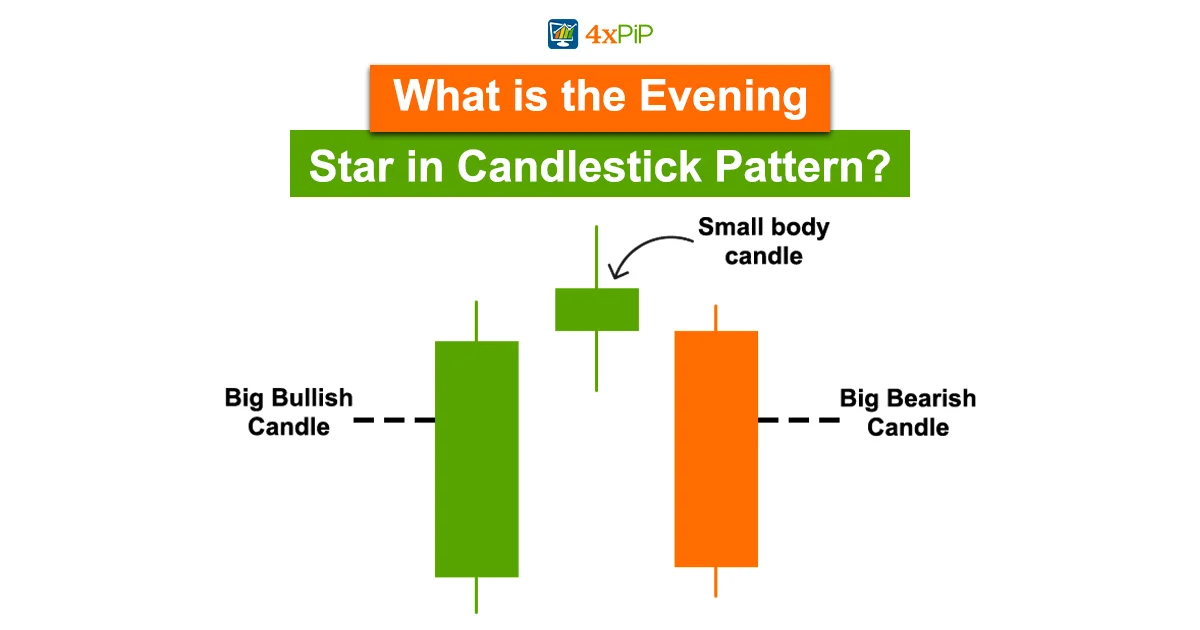
The Evening Star pattern is the inverse of the Morning Star. It is a bearish reversal pattern that signals the end of an uptrend. It typically unfolds over three days and consists of three candles.
- The first candle is a long bullish candle, indicating a strong uptrend.
- The second candle is small-bodied, representing market indecision.
- The third candle is a long, bearish candle that closes at least halfway down the body of the first candle.
This pattern suggests that the bulls are losing control, and a bearish reversal may be on the horizon. Similar to identifying the Morning Star pattern, recognizing the Evening Star pattern requires carefully analyzing the candlestick chart. The first step is to identify a strong uptrend characterized by bullish candles. Once the uptrend is established, the next candle will be small-bodied, indicating market indecision. Finally, the third candle will be a bearish candle that closes at least halfway down the body of the first candle.
Like the Morning Star pattern, the Evening Star pattern is considered more reliable when the second candle is a doji or a spinning top. The length of the bearish candle in the pattern also plays a role in determining the strength of the potential reversal signal.
How to Trade the Evening Star Candlestick Pattern?
When trading the Evening Star candlestick pattern, the entry strategy typically involves entering at the opening of the next candle once the formation is complete. Traders seeking a more conservative approach may delay their entry, waiting to observe if price action moves lower. However, this cautious approach carries the risk of entering at a less favorable level, particularly in fast-moving markets.
To set targets, traders commonly place them at previous support levels or in prior consolidation areas. Meanwhile, stops are often positioned above the recent swing high, as a breach of this level would invalidate the anticipated reversal. Given the inherent uncertainties in the forex market, it is paramount for traders to adopt sound risk management practices, ensuring a positive risk-to-reward ratio for each trade. This approach helps safeguard against potential losses and enhances the overall effectiveness of trading strategies based on the Evening Star candlestick pattern.
Morning Star Candlestick Pattern vs. Evening Star Candlestick Patterns
|
Feature |
Morning Star |
Evening Star |
|
Appearance |
After a downtrend |
After an uptrend |
|
Candles |
1. Long bearish candle 2. Doji or small candle 3. Long bullish candle |
1. Long bullish candle 2. Doji or small candle 3. Long bearish candle |
|
Sentiment |
Bears weaken, indecision, bulls gain control |
Bulls weaken, indecision, bears gain control |
|
Signal |
Potential bullish reversal |
Potential bearish reversal |
Think of the Morning Star and Evening Star as stars in the trading sky. But as you explore more, you’ll find many other candlestick patterns, each with its secrets about the market. Arm yourself with knowledge, practice technical analysis, and confidently analyze the challenges of trading. And, with the assistance of 4xPip, seize opportunities even in the darkest moments, ensuring a path illuminated by both understanding and potential gains.
Conclusion:
The candlestick patterns reveal concrete market truths. They illuminate potential reversals, empowering traders to analyze the trading with confidence. Furthermore, the Morning Star, signaling a bullish reversal, marks the end of a downtrend, while the Evening Star, its bearish counterpart, indicates the conclusion of an uptrend. 4xPip‘s support through a talented team of MQL4 programmers and custom indicator programming gives traders an extra edge. The path to trading success is paved with knowledge, practice, and a sprinkle of candlestick magic! And with guidance from 4xPip, you can analyze the market with greater confidence and clarity.

